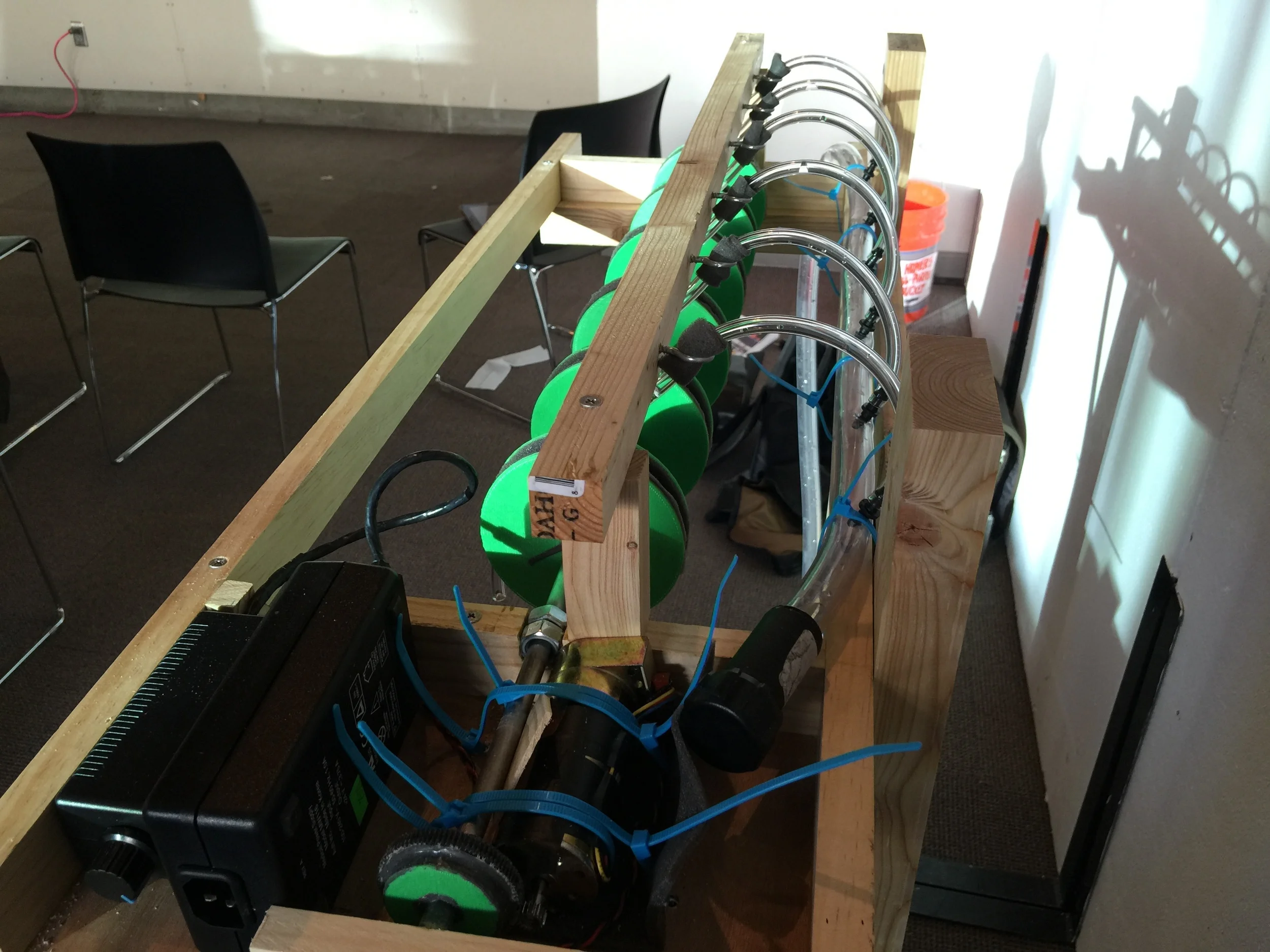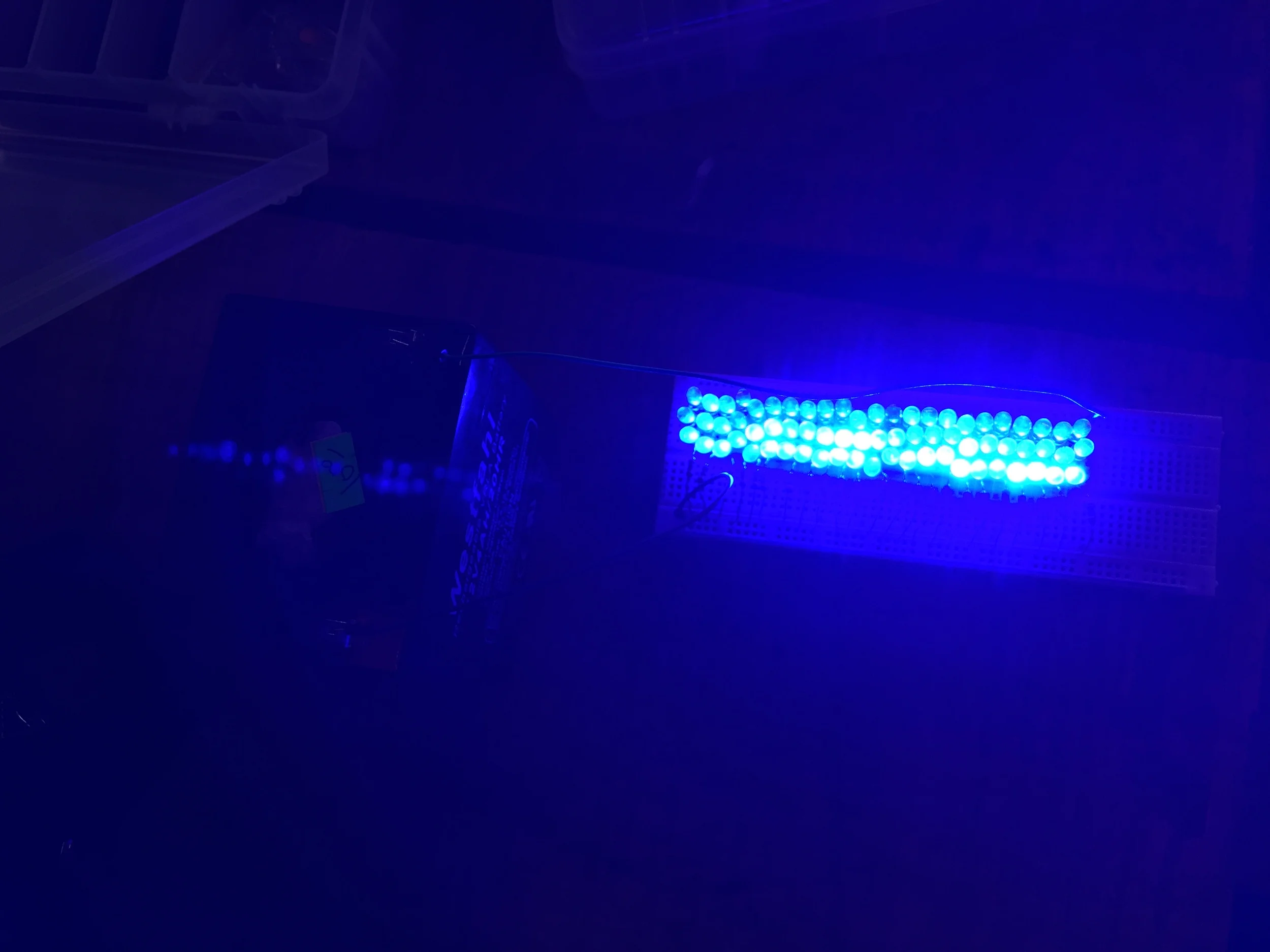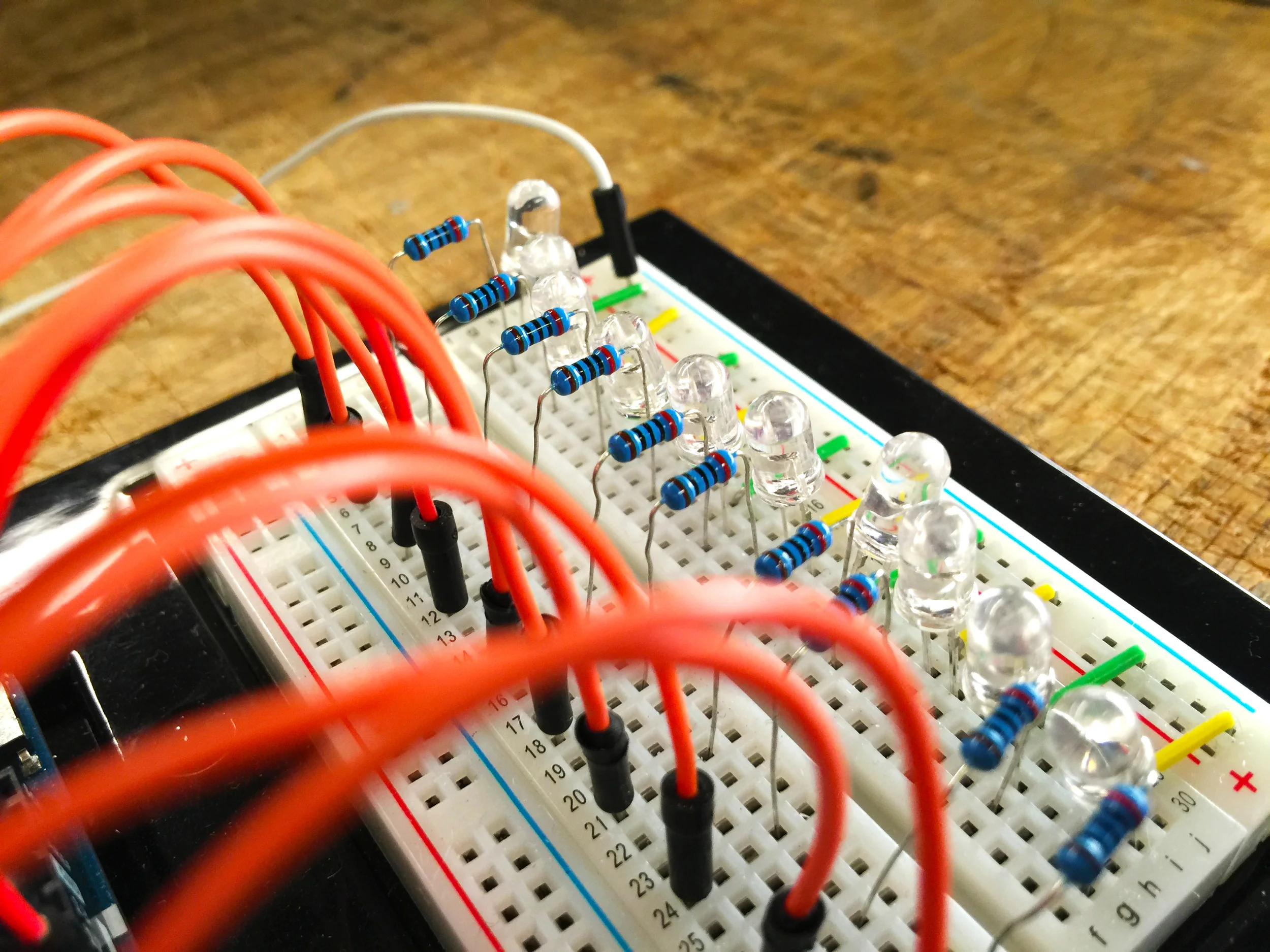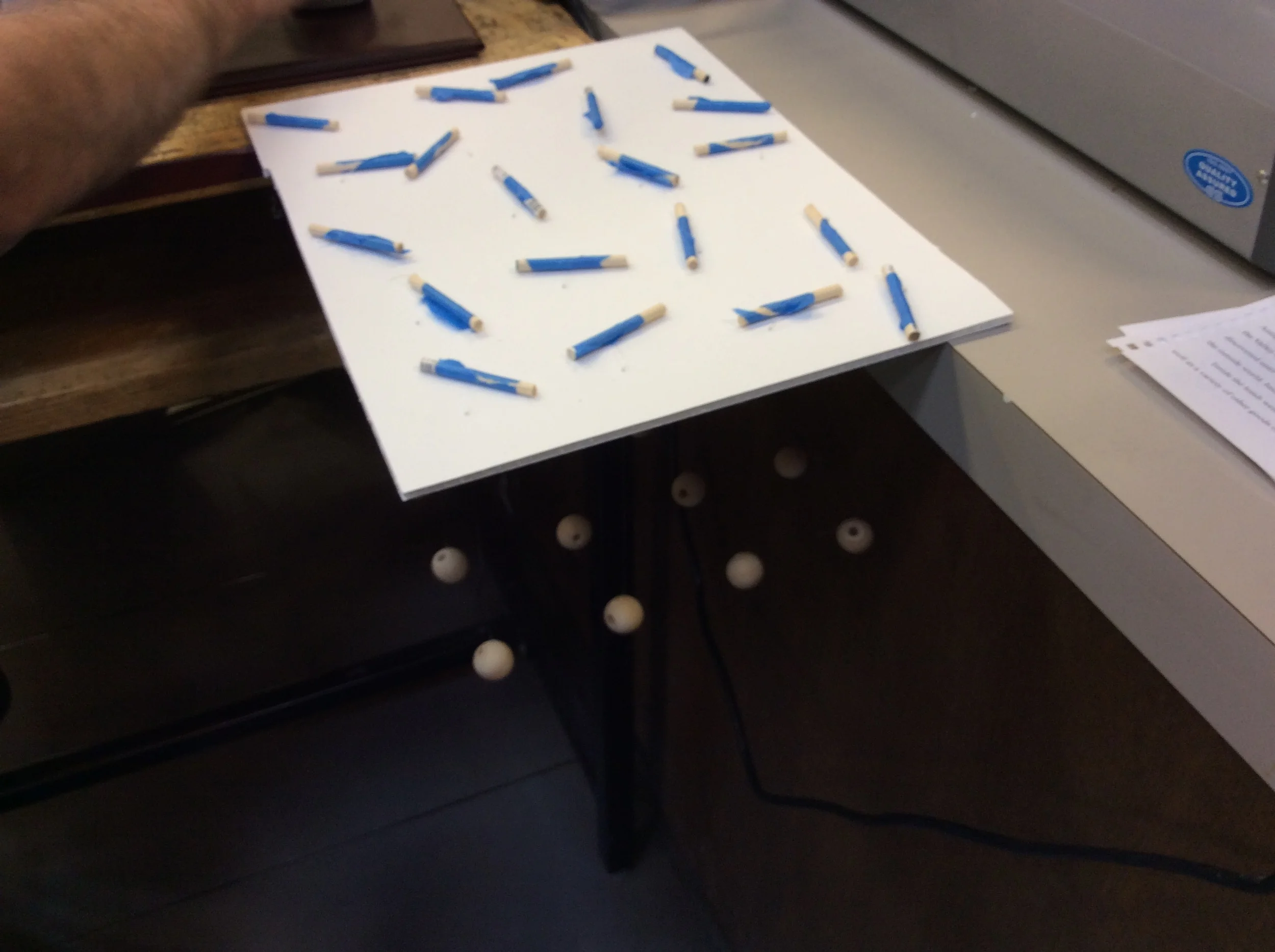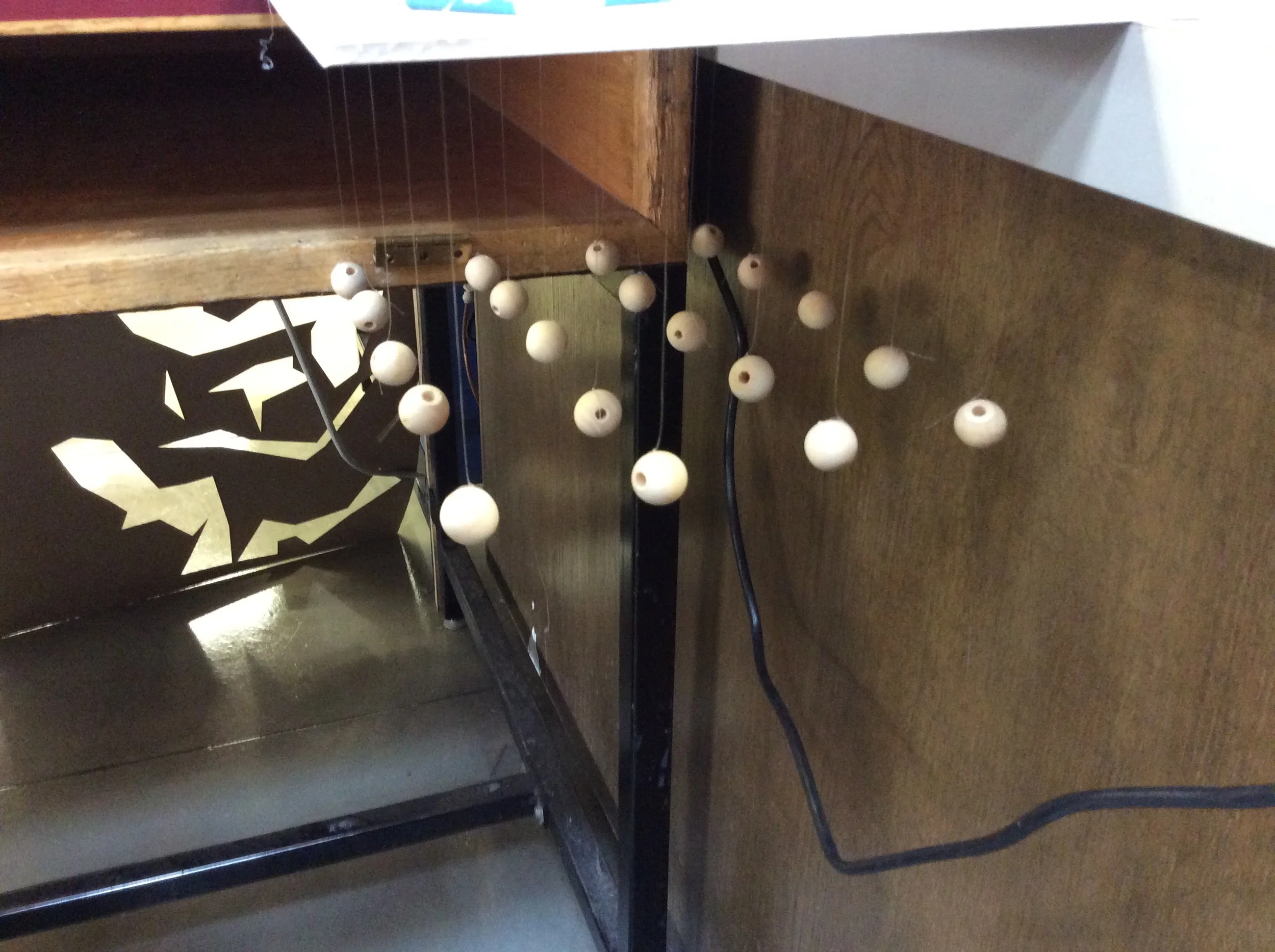Sonic Responsive Systems
Masters of Architecture Design Studio
Session Studio CA+P | Fall 2014 | ARCH 6005-04
College of Architecture and Planning, University of Utah
As a research-based studio that integrates digital aural composition with physical space design, the objective is to produce a sonic design; whether it be musical, soundscape or tapping into the sound energy generated by a space. In essence, the archetype integrates space design as a musical instrument and the space’s ‘musical’ composition, as one intertwined paradigm. The work progress adopts a transversal approach and, uses the conceptual and technological bridges that are naturally created between science, visual arts, mathematics, and music. Therein, the students create a visual and aural synthetic experiment, in which the perception of sound is closely related to the various forms of a surface. There is a series of challenges to be tackled. The obvious one is the nature of sound and to grasp the dynamic characteristics of a visually indiscernible design tool. Another issue that needs to be tackled is employing digital tools and physical kinetics implementation. Students have been introduced to electric engineering basics, such as motor fittings and audio transducers, which is vital to transform the surface into a dynamic sonic space.
Stroboscopic Illusion
Team: Selahe Ansari, Joseph Briggs, and Brian Scott
Our group decided to continue the work of the Hydro E group from the previous year. The group aimed to use a stroboscopic effect on streams of water oscillating at a specific frequency to make it appear as if the streams were suspended in place. The previous group used speakers to drive the oscillation of the streams of water. Since this is simply a mechanical effect of the speakers playing a specific frequency, our group decided to use simple gears to produce the same effect. The experiment is based on the video on the following page which demonstrates a similar effect when the streams of water are driven at frequencies of 23 to 25 Hz while recorded at 24 frames per second. Though the effect is clearly visible in the video, it is not visible to the human eye when confronted with the stream of water in reality. The stroboscopic effect is a method to make this illusion visible in reality.
Kinetic Symphony
Team: Kirck Chadwick, Danny Carmen, and Massih Nilforoushan
The way this program is designed to work is through the use of what we called “Sensors,” (Represented by the white circles which trigger when a high enough sound level enters the microphone. The sensors move over the field and as they enter a certain proximity to each “Drop” (Represented by the black circles) the drops rise and fall accordingly. When a sensor reaches the other side and does not affect any more drops, it resets and waits for the next sound. The reason there are two drops on each side is so the wave can be constant if there is continuous sound, Otherwise it would have to stop and wait for the first sensor to reset.
Gill Slit
Team: Fatima Malekloo, Lindsay Raudales and Tales Brito
We studied some precedents and the most helpful was the One Ocean Pavilion. It contains a system that applies a force upward and downward on a strip of glass fiber reinforced plastic causing it to twist. Each fin is individually controlled by linear actuators in order to make a wave like effect on the façade. Our objective is to have a very similar effect that will respond to sound waves.







